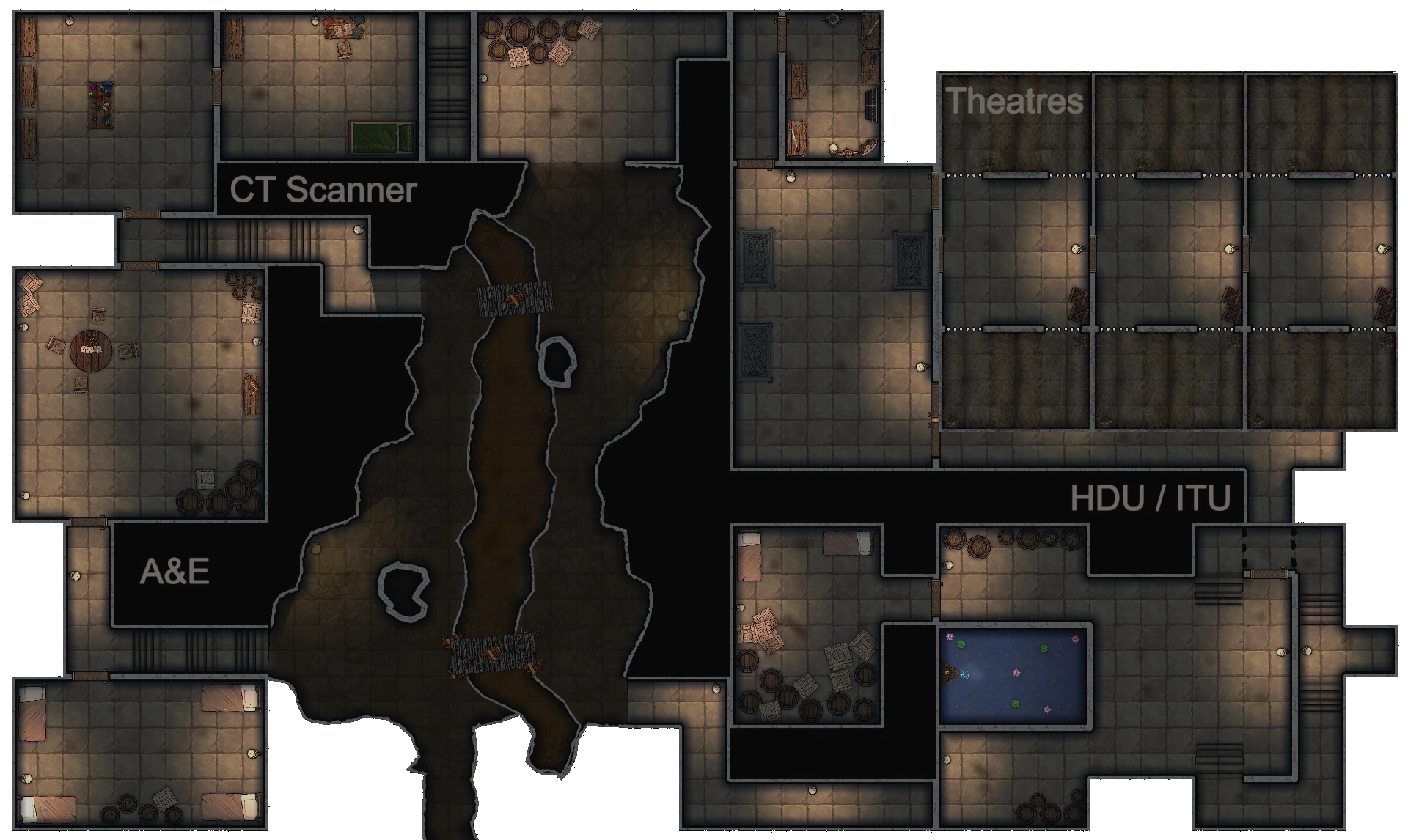

The entire clinical modelling runs to a 1ms resolution for all patients.
At any point, when you are with a patient, you can view the detailed models in real time by clicking on the "Models" button. This facility is not disabled while you are involved in a scenario, but it provides you with insights that may aid your clinical management - so you will be penalised in the final debrief scoring.
Level of Consciousness uses the familiar 4-point sedation scale:
alert drowsy but responds to speech responds to stimulation unresponsive.
Uses a 10-chamber model. The 4 cardiac chambers are contractile. All are modelled in detail. Flow is currently all forward through perfect valves - valve integrity can be defined per chamber. Atrial systole lasts 90ms. Ventricular systole time varies from 300ms to 120ms depending on heart rate. Passive flow occurs along concentration gradients, modulated by any resistance. Active flow involves a pressure profile per-chamber and an inotropy-dependant transfer of blood per millisecond. Starling happens (of course) via end-diastolic-volume input to the inotropy calculation.
The ECG is generated using multiple scaled gaussian functions (the mathematical formula for the normal distribution curve). Gaussian functions feel very physiological and provide a flexible and convincing ECG trace. Because the ECG waveform is generated in real-time the morphology can reflect changing plasma potassium levels, ischaemia, etc.
The CVS model includes an "organs" chamber which receives the total blood-flow for all organs. Within that "chamber" major organ systems can regulate their own flow by manipulating individual input resistances. The brain tries to grab 1 L/min regardless. Muscles vasodilate dramatically to β stimulation. Skin and GIT vasoconstrict to α stimulation. The net result of organ demands is a global change in SVR which the circulation model will try and accommodate. The global response to changes in SVR involves a feedback loop where changes in carotid sinus pressure immediately affect autonomic output.
The respiratory system involves mechanics, a gas-exchange model (V/Q), and a number of modelled pathologies: pneumothorax, flail segment, pulmonary oedema, pericardial effusion etc.
Three-compartment pharmacokinetics are defined dynamically and are implemented for all IV drugs. This is flexible enough that boluses and infusions can be accurately combined. The model allows simple and accurate propofol and remifentanil TIVA calculations: just set a target blood concentration (into the model) and the pump will autoadjust to achieve and maintain that. The various receptor populations are defined individually: a simulated opiate user will have more μ-receptors to fill.
Only relevant LA blocks are included (serratus anterior & femoral nerve blocks). Spinal (intrathecal) anaesthesia is modelled.
Volatile agents readily move down concentration gradients from Inhaled to CNS (in both directions). Blood solubility has a major effect on the overall rate so is modelled per agent. Some of the clinical subtleties, airway irritation etc, are not modelled.
Standard weight-derived fluid compartments are modelled. IV Hartmann's solution or N Saline equillibrate to the sodium-space over 25 minutes. Blood and colloids do what you expect. 5% Glucose infusions (to total body water) are not modelled because of the scenario timescale.
These include tracheal intubation & arterial line insertion. For the purposes of the simulation procedures occur instantly, without equipment availability issues, and always work perfectly without complications. To offset this "advantage" clinical timings are all slightly faster than in real life - without compromising the feeling of realism. Instant procedures give you more time to think - but you will have to use it well!
The autonomic model is key to the realism of many of the interactions in the simulation. Vagal tone, α and β stimulation, are simulated both as direct CNS output, circulating adrenaline (epinephrine), pharmacological boluses and infusions, and due to factors such as pain, hypercarbia, and surgical stimulation. We experience and manage autonomic phenomena in our patients every day - we know them well!
Alan Hope, JET5, Sep 2022
